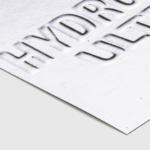In the world of luxury and personal adornment, custom jewelry boxes serve as more than just storage—they are a reflection of brand identity and a tactile extension of the jewelry’s elegance. For businesses and designers, understanding the journey from a conceptual idea to a finished custom jewelry box is essential for creating packaging that enhances both product value and customer experience. This article explores the intricate process of custom jewelry box manufacturing, highlighting key stages that transform visions into tangible, high-quality products.

1. The Design Conception: Translating Ideas into Blueprints
The manufacturing journey begins with a clear design brief. Whether inspired by vintage aesthetics, modern minimalism, or cultural motifs, the initial stage involves collaborating with designers to sketch conceptual layouts. CAD (Computer-Aided Design) software plays a pivotal role here, allowing for 3D modeling that visualizes dimensions, materials, and structural details. Key considerations include the target jewelry type (necklaces, rings, watches), intended use (retail display, gift packaging, or personal storage), and brand messaging. For example, a luxury brand might incorporate embossed logos or metallic finishes, while an eco-friendly line may prioritize sustainable materials like recycled wood or organic cotton linings.
2. Material Selection: Balancing Aesthetics and Functionality
The choice of materials defines both the box’s appearance and durability. Common options include:
- Exterior Materials: Premium woods (mahogany, oak) for a classic look, high-quality cardboard with laminated finishes for versatility, metallic sheets for luxury, or even synthetic leathers for a vegan-friendly alternative.
- Interior Linings: Soft fabrics like velvet, silk, or suede protect jewelry from scratches, while foam inserts provide structured support for specific piece shapes.
- Hardware Components: Hinges, latches, and clasps must be corrosion-resistant and smooth-operating, ensuring the box opens and closes seamlessly over time.
Manufacturers often provide material samples to clients, allowing them to assess texture, colorfastness, and compatibility with design elements. Sustainability is increasingly a priority, with many brands opting for FSC-certified wood or biodegradable packaging solutions to align with eco-conscious consumer values.
3. Manufacturing Techniques: Crafting with Precision
Once materials are selected, the production process begins. This typically involves:
- Cutting and Shaping: Automated cutting machines ensure precise dimensions for exterior panels and interior inserts, minimizing waste and ensuring consistency across batches.
- Decorative Processes: Techniques like embossing, debossing, foil stamping, or screen printing add visual appeal. Laser engraving is popular for intricate designs or personalized messages, while hand-painting may be used for artisanal, one-of-a-kind pieces.
- Assembly: Skilled artisans assemble components, attaching hinges, lining interiors, and ensuring all parts fit together flawlessly. Quality control checks at this stage verify structural integrity and alignment.
For custom orders with unique shapes—such as hexagonal boxes or curved-lid designs—specialized tools and molds may be required, adding a layer of complexity to the manufacturing process.
4. Quality Assurance: Ensuring Perfection
No custom jewelry box reaches the client without rigorous quality control. Inspections cover:
- Structural Soundness: Testing hinge durability, latch functionality, and load-bearing capacity (especially for boxes meant to hold multiple heavy pieces).
- Aesthetic Consistency: Verifying that colors match approved samples, finishes are uniform, and decorative elements are accurately placed.
- Protective Features: Ensuring linings are securely attached and provide adequate cushioning, with no protruding threads or rough edges that could damage jewelry.
Manufacturers may also conduct drop tests or simulate shipping conditions to ensure the box protects its contents during transit, a critical factor for e-commerce brands.
5. Personalization: Adding the Finishing Touches
The “custom” in custom jewelry boxes lies in the ability to tailor every detail. This can include:
- Branding Elements: Incorporating logos, taglines, or brand colors through printing, embossing, or metal plaques.
- Functional Customizations: Adding removable trays, adjustable dividers, or built-in mirrors for enhanced usability.
- Limited Editions: Creating unique designs for special collections, such as holiday-themed boxes with seasonal motifs or commemorative packaging for anniversary pieces.
Personalization turns a simple box into a memorable unboxing experience, strengthening brand recall and customer loyalty.
Bringing Your Vision to Life
Custom jewelry box manufacturing is a blend of artistry and engineering, requiring collaboration between designers, material experts, and skilled manufacturers. By focusing on each stage—from conceptual design to meticulous quality control—brands can create packaging that not only protects their jewelry but also tells a story. Whether aiming for luxury, sustainability, or sheer functionality, the right manufacturing partner can transform ideas into custom jewelry boxes that leave a lasting impression.
When selecting a manufacturer, look for expertise in your desired materials and design complexity, ask for sample portfolios, and prioritize those who offer end-to-end services—from initial CAD modeling to final delivery. With the right approach, your custom jewelry box will become an integral part of your brand’s narrative, enhancing every interaction from the first unboxing to years of cherished use.



